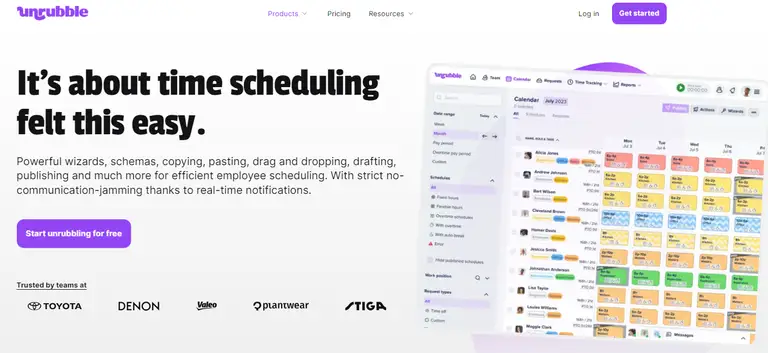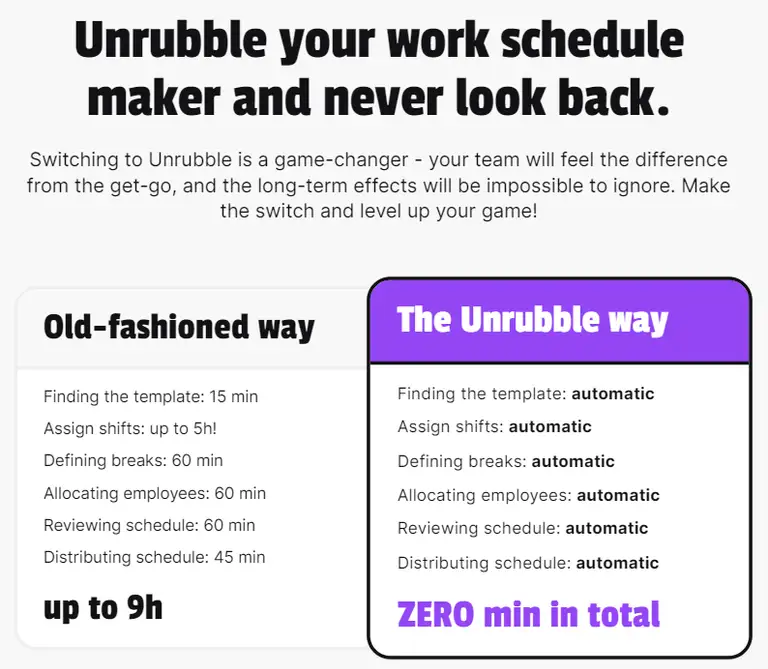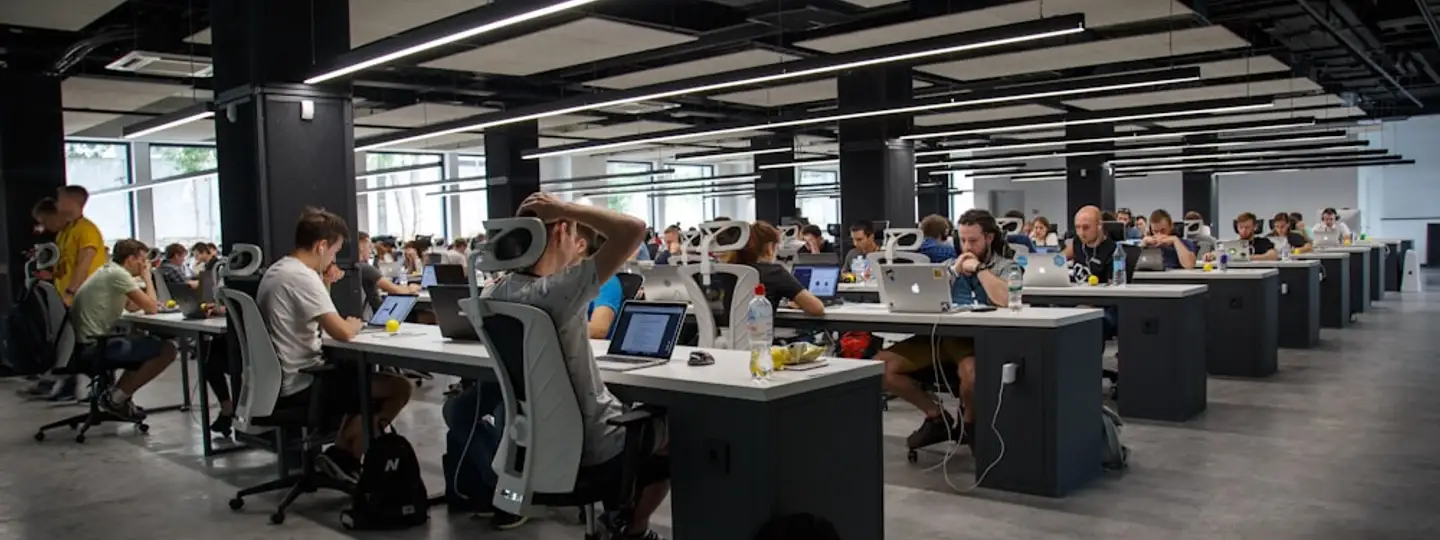Creating the perfect staffing model for your business can feel like trying to solve a Rubik's Cube.
It's complex and frustrating, but satisfying when everything clicks into place.
Whether you’re the brains behind HR or the boss calling the shots, getting your staffing right is key for setting your team up for success.
In this article, you will learn how to map out a staffing blueprint that’s not just a fit, but a perfect match for your unique business needs.
Let's roll up our sleeves and get right into it:
What is a staffing model?
An employee staffing model is a plan that businesses use to figure out how many workers they need and what kind of skills they should have to meet their goals.
There are various staffing models, each with its own approach, depending on your company's needs.
→ For example, the traditional model focuses on having full-time employees who are permanently part of the team. This model is great for businesses that need a stable workforce where employees have a deep understanding of the company.
→ On the other hand, some companies might have a flexible staffing model, which mixes part-time, temporary, or freelance workers with full-time staff. This can be particularly useful for businesses that see big swings in demand, like retail stores during the holiday season or tech startups that grow rapidly.
→ Then there's the project-based model, where teams are built specifically to tackle particular projects. Once the project ends, the team might be disbanded, or members might be moved to new projects. This model works well for industries like construction or consulting, where work can vary greatly from one project to the next.
Each staffing model has its strengths and challenges. Choosing the right one can make a huge difference in how smoothly a company runs and how well it can achieve its objectives. It's all about matching the right type of workers with the right kind of work to keep everything moving forward smoothly.
Different types of staffing models
As we move forward, let's have a closer look at the exact types of staffing models and how they vary:
Traditional (full-time)
This model is about hiring employees who work full-time hours, typically 40 hours a week. They're permanent fixtures in the company.
- Example: A software company hires full-time developers to maintain and improve its products continuously.

Flex-time
Employees under this model can choose their start and end times within agreed limits. It’s great for accommodating personal commitments.
- Example: An accounting firm allows staff to start anytime between 7 AM and 10 AM, as long as they complete their 8-hour shift.

Part-time
Part-time employees work fewer hours than full-timers, often to balance work with other aspects of life.
- Example: A retail store hires part-time workers to manage cash registers during peak hours.

Outsourced
Here, certain functions are performed by external organizations or freelancers instead of in-house staff.
- Example: A tech startup outsources its customer service operations to a specialized firm.

Temporary/contingent
Companies hire individuals for a set period or specific projects. This model is flexible and can be a good way to handle workload peaks.
- Example: A publishing company hires extra editors temporarily to handle the increased workload during the book release season.

Remote/telecommuting
Employees work from locations outside of the traditional office environment, often from home.
- Example: A digital marketing agency has team members working remotely from different parts of the world.

Shift-based
Work hours are divided into shifts. This model is common in industries that operate around the clock.
- Example: A manufacturing plant operates with three shifts to keep the factory running 24/7.

Skill-based
Staffing is based on specific skills needed at different times, allowing for highly specialized roles.
- Example: A construction company hires skilled electricians or plumbers as needed for various phases of building projects.

Hybrid
A combination of several staffing models to create a flexible and adaptive workforce.
- Example: A consultancy uses a hybrid model with full-time senior consultants, part-time junior staff, and freelancers for specialized tasks.

How to create an effective staffing model
The example schedules you've just seen look rather simple.
However, there's quite a lot of background work that goes into creating something like that.
Worry not though, we're here to walk you through every step of designing a proper staffing model for your business:
Understand your business objectives
Start with the end in mind. What are your organizational goals?
Whether it's growth, stability, or innovation, your staffing model should directly support these objectives. With this alignment, every hire will contribute to the bigger picture.
Expert tip: Use the SMART criteria (Specific, Measurable, Achievable, Relevant, Time-bound) to define and refine your organizational goals. This framework will make your objectives clear and actionable, so it's easier to align your staffing model accordingly.
Analyze workload and demand
Look at the ebb and flow of your business activities.
Are there peak periods? What's the typical workload like?
Understanding these patterns will help you decide the best staffing model to handle these variations without overshooting labor costs.
Expert tip: Implement tools like Microsoft Power BI or Tableau for data visualization. These embedded business intelligence tools can help you analyze historical data on workload and seasonal trends, so you can predict future staffing needs with greater accuracy.
Define roles and responsibilities
Clarity is key in the perfect staffing model.
Clearly defined roles and responsibilities help avoid overlaps and gaps.
It's like ensuring everyone knows their part in a play so the performance is perfect.
Expert tip: Adopt a role clarification tool like RACI (Responsible, Accountable, Consulted, Informed) matrix. This tool helps define roles in terms of involvement and decision-making across projects.
Assess current staffing levels
Take stock of your current team.
Are there enough hands on deck? Do your employees have the right skills?
This assessment helps you identify gaps and plan your hiring process.
Expert tip: Conduct skills audits using platforms like LinkedIn Learning or Coursera to assess the skills and competencies of your current workforce. This can help identify skill gaps and guide future hiring and training programs.
Forecast future staffing needs
Look ahead.
Based on your growth projections and market trends, estimate your future staffing requirements.
This foresight prevents scrambling for hires at the last minute and helps you craft a strategic approach to scaling up.
Expert tip: Try workforce planning software like Unrubble. Such tools can integrate with your HR systems to help forecast staffing needs based on various scenarios and growth projections.
Consider workforce segmentation
Different roles need different approaches.
For example, a nurse staffing model might prioritize nurse-patient ratios, while a tech company might focus on project-based roles.
Segmenting your workforce allows for tailored strategies that meet specific needs.
Expert tip: Segment your workforce based on criteria like job function, project type, and required expertise using analytics tools within your HR software.
Use workforce planning tools
Take advantage of technology to simplify your staffing process.
These tools can help predict staffing needs, track the effectiveness of your staffing strategy, and manage schedules efficiently.
Expert tip: Consider using advanced scheduling software like Unrubble. These tools have features for dynamic scheduling, labor forecasting, and real-time communication - all essential for successful workforce management.
Balance permanent and contingent staffing
Combine stability with flexibility.
Permanent employees offer continuity, while contingent workers (like freelancers or temps) can be brought in to manage extra demand without the long-term cost commitment.
Expert tip: Leverage platforms like Upwork for finding contingent workers and integrating them into your workforce for short-term projects. This can help maintain flexibility without compromising the quality of work.
Develop recruitment and retention strategies
Prioritize employee retention.
Hiring is costly, so keeping your team happy is key.
This means creating a positive work environment and providing growth opportunities. Also, consider contacting past applicants for new roles - they might be the perfect fit this time around.
Expert tip: Implement an employee feedback tool like Culture Amp or SurveyMonkey to regularly gather and analyze employee satisfaction and retention metrics. Use this data to improve your workplace environment and develop great recruitment strategies.
Monitor and adjust
The only constant is change.
Regularly review your staffing model so it remains aligned with your business needs.
The human resources department should work closely with hiring managers to adjust the approach as necessary.
Expert tip: Set regular review meetings using tools like Trello or Asana to track your staffing model and make adjustments in real-time. These platforms allow you to assign tasks, follow up on adjustments, and maintain continuous improvement in your staffing strategy.
Meet Unrubble - your staffing companion

If you want to save time and other resources, we recommend letting a specialized solution help you with your staffing needs.
Meet Unrubble - your ultimate companion for creating an appropriate staffing model.
Have you ever felt overwhelmed with the endless tables, shifting timelines, and the constant back-and-forth of managing a team?
Say goodbye to those headaches and hello to simplicity with Unrubble!
Why choose Unrubble?
Because it transforms the way you handle employee schedules. With Unrubble, scheduling becomes a breeze, not a chore. Check out features like:
- Mobile Time Clock,
- sporting face recognition
- and anti-spoofing technology,
or manage:
- paid time off,
- work-from-home days,
- and business trips effortlessly with our PTO Tracker.
Think of Unrubble as your scheduling wizard. It's equipped with tools for everything from drafting to publishing schedules, all with simple drag-and-drop actions.
And with real-time notifications, communication jams are a thing of the past.

Key perks:
- Time tracking: precision at its finest, because every minute counts.
- Employee Self-Service App: let your team manage their details directly.
- Free mobile app: shift swaps and schedule updates right from your phone.
Join over 199,950 happy users from diverse teams who have streamlined their scheduling processes. Unrubble is not just about filling slots - it’s about creating peace in your team’s daily grind.
Start unrubbling for free today.



![What Does PEO Stand For In HR Administration? [2026 Guide]](/static/image?src=https%3A%2F%2Fcdnblog.unrubble.com%2Fpayload-unrubble-images%2FUnrubble-what-does-peo-stand-for-in-hr-administration-180x120.jpg&width=128&height=128&fit=cover&position=center&quality=65&compressionLevel=9&loop=0&delay=100&crop=null&contentType=image%2Fwebp)



